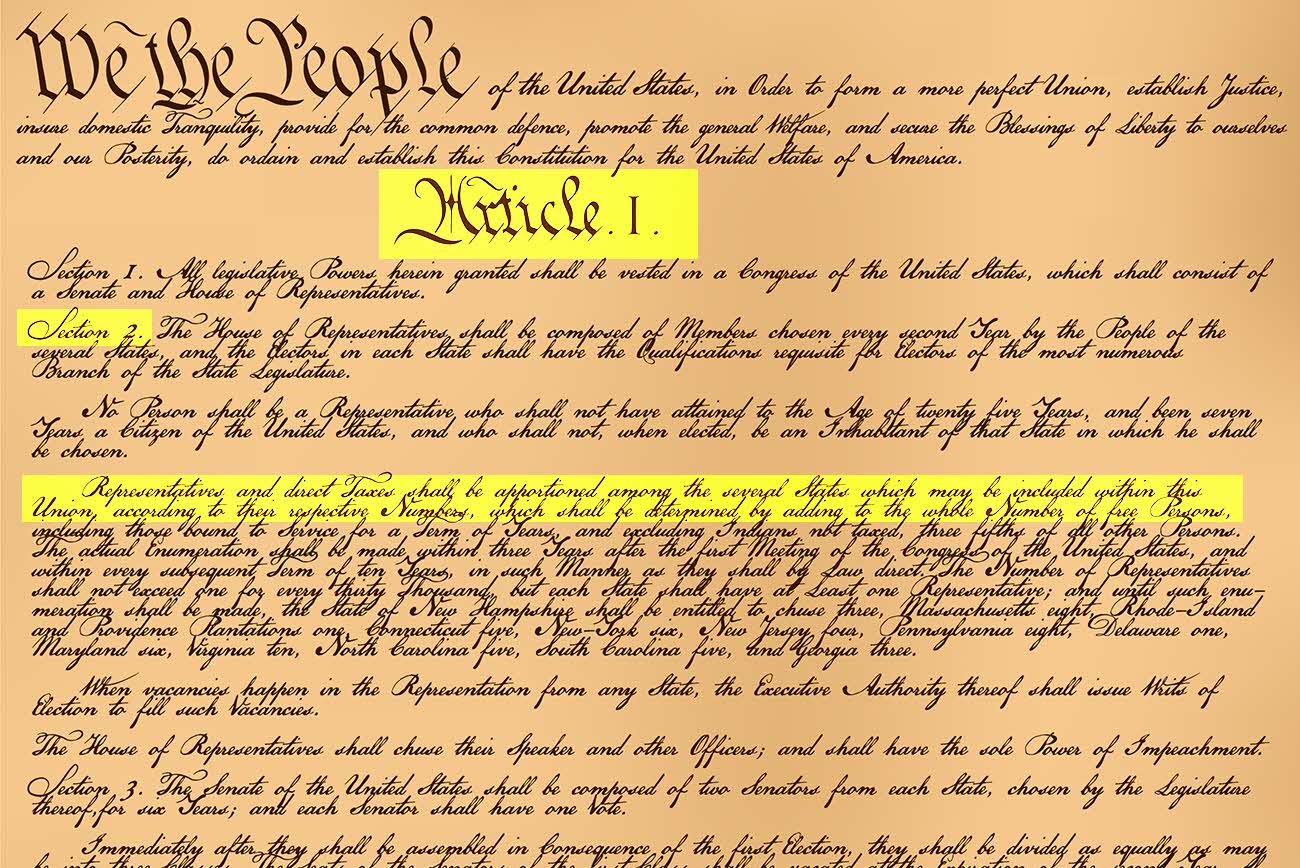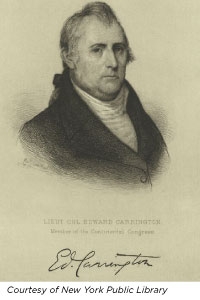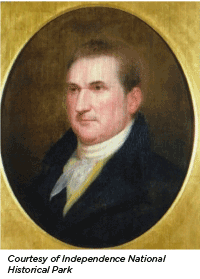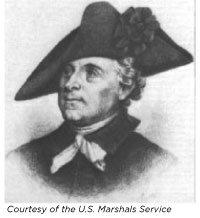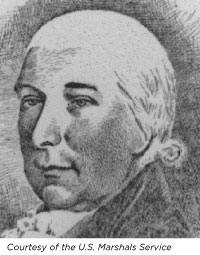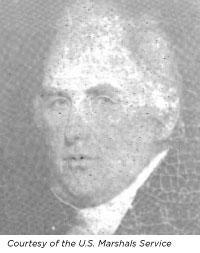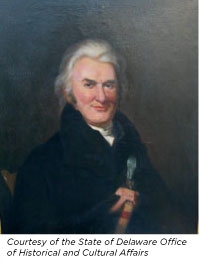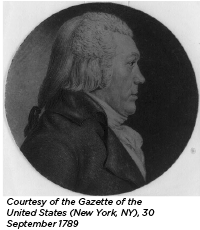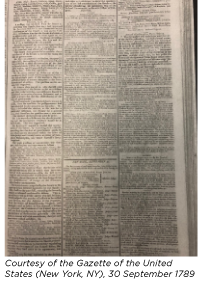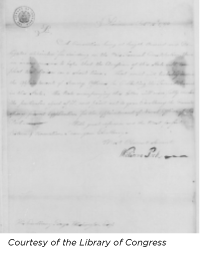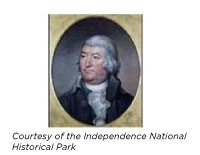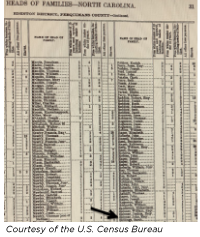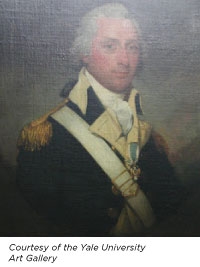U.S. Marshals Overcame Hardships and Challenges to Count 3,929,214 People in a Young America
A few days before leaving New York City, the first capital of the young United States of America, Congress passed the First Census Act of 1790.
The Act echoed the Constitution, calling for an “actual Enumeration…within every subsequent Term of ten Years, in such Manner as they shall by Law direct.”
Carrying out the census in 1790 was difficult in a new country with little infrastructure and a widely scattered population.

This crucial legislation established the ground rules for the first census and empowered U.S. marshals to carry out the monumental task of accurately recording America’s population.
It required the marshals to post the information in two public places for residents to make corrections before submission.
Those days are long gone. This practice ended with the 1850 census. Privacy and Confidentiality are now paramount. The Census Bureau is bound by Title 13 of the U.S. Code to keep your information confidential.
Carrying out the census in 1790 was difficult in a new country with little infrastructure and a widely scattered population.
Each marshal received between $100 (equivalent in purchasing power to $2,793.20 in 2020) and $500 ($13,965.98 in 2020). Their assistants would receive $1 ($27.93 today) for every 50-300 people enumerated.
The census began on Aug. 2, 1790, and officially ended nine months later (May 2, 1791) but several states (Rhode Island, Vermont and South Carolina) and the Southwest Territory received extensions.
Despite the difficulties and challenges the U.S. marshals faced, Secretary of State Thomas Jefferson put the first data tables in an official government document on Oct. 24, 1791, and issued the final report in 1793, after South Carolina’s count was completed: The United States had a population of 3,929,214.
The first official population count was a testament to the determination, intelligence and patriotism of the first U.S. marshals and their deputies.
The 16 U.S. Marshals, One Territorial Governor Who Conducted the First U.S. Census
Clement Biddle
Pennsylvania
Clement Biddle, a lawman, was a public servant for nearly three decades, returning eventually to his father’s shipping business. He formed militia units, fought in the American Revolution’s major battles and became a colonel and quartermaster general for the Pennsylvania militia.
He also sought numerous opportunities to increase his personal wealth and accepted President George Washington’s appointment to be Pennsylvania’s first U.S. marshal.
Biddle deputized 32 people to serve as census takers and count Pennsylvania’s then population of 434,373.
Unlike early enumerators in other parts of the country, some of Biddle’s deputies, on their own or perhaps at the behest of Biddle, included some residents’ occupations in the survey.
In doing so, Biddle’s deputies inadvertently established the precedent of collecting economic data as part of the census. Collecting economic data on a federal census form did not become standard practice until the 1810 census.
William Blount
Southwest Territory (Tennessee)
He was not part of the U.S. Marshal Service but as governor of the Southwest Territory (present-day Tennessee), William Blount conducted the 1790 Census for the area. Blount was a veteran of the American Revolution and signatory of the U.S. Constitution.
Initially, then-Secretary of State Jefferson informed Blount “that [the census] act has not required it [the census to be taken] in your Territory, nor provided for any expense which might attend it.”
However, Blount ordered his militia captains to act as enumerators and count the Southwest Territory’s population in an effort to advance the cause of statehood for the territory.
According to Blount’s 1790 Census returns, the Southwest Territory had a population of 35,691, which meant that it failed to meet the threshold of 60,000 people required for a territory to become a state.
Undaunted, Blount continued to serve his fellow “Tennesseans” by creating the administrative groundwork essential for statehood, serving as one of Tennessee’s first U.S. senators (Aug. 2, 1796 – July 8, 1797), and as speaker of Tennessee’s state Senate (1798 – 1799).
Philip Bradley
Connecticut
Having worked as a farmer, merchant, local politician and an officer in the Continental Army, Philip Bradley was the perfect candidate to serve as Connecticut’s first U.S. marshal.
Bradley ensured that his deputies completed their census counts within the nine-month deadline established by Congress.
Bradley reported that Connecticut then had a total population of 237,946.
Edward Carrington
Virginia
Edward Carrington was a veteran of the American Revolution, an experienced national politician and Virginia’s first U.S. marshal.
He began the monumental task of ensuring that his 68 deputies counted Virginia’s 1790-91 population in a timely manner. Unfortunately, the 1790 Census schedules (handwritten information sheets recorded by enumerators) for Virginia were destroyed when the British burned Washington, D.C., in 1814.
As a result, there are few details of the actual enumeration process but the final report shows that Carrington and his deputies completed their enumeration by Oct. 24, 1791, and that Virginia was then the largest state, with a population of 747,610.
Almost three years after overseeing the enumeration of Virginia’s 1790 population, Carrington retired from public service and lived as a private citizen for the remainder of his life, with a few noteworthy exceptions: He served as the foreman of the jury that acquitted Aaron Burr during his treason trial.
Henry Dearborn
Maine
Among President Washington’s first class of the U.S. Marshal Service was 38-year-old Henry Dearborn of Maine, who played a central role in the American Revolution, the early political landscape of the United States and the 1790 Census.
After distinguishing himself in some of the bloodiest battles of the American Revolution, Dearborn served as the district of Maine’s first U.S. marshal. In this capacity, he personally enumerated the populations of 23 towns in three different counties.
With the assistance of his deputies, he determined that Maine then had a population of 96,540 people. His task completed, Dearborn’s political career skyrocketed. He went on to serve in Congress and as secretary of war.
Robert Forsyth
Georgia
In the fall of 1789, President Washington appointed Robert Forsyth, a veteran of the American Revolution and family friend, as Georgia’s first U.S. marshal — a decision that would prove fateful.
Forsyth and his deputies enumerated 82,548 people by June 25, 1791, and met the original deadline set by Congress.
Forsyth continued to serve as a marshal until 1794, when he was shot and killed while trying to arrest a former churchman named Beverly Allen. Forsyth became the first federal law enforcement officer killed in the line of duty.
Isaac Huger
South Carolina
Like most of his colleagues in the U.S. Marshal Service, Isaac Huger had a rich career of service to his state and the nation. It began when he joined the Provincial South Carolina Regiment, with whom he fought in the Anglo-Cherokee War as a lieutenant at the age of 18.
In the years following, Huger served as a member of the First Provincial Congress of South Carolina, fought in numerous battles during the American Revolution and worked as sheriff of the Charleston District.
His service and personal friendship with Washington led to an appointment as South Carolina’s first U.S. marshal in the fall of 1789.
Huger failed to return South Carolina’s 1790 Census responses by the initial Sept. 5, 1791, deadline But he secured a congressional extension to avoid the hefty $800 penalty ($22,345.57 today).
Huger ultimately delivered South Carolina’s 1790 census returns with the help of his 18 deputy marshals on Feb. 5, 1792. Final population count: 249,073.
Jonathan Jackson
Massachusetts
Unlike many of his contemporaries, Jonathan Jackson was not a veteran of the American Revolution but his knowledge and personal prestige among his regional contemporaries proved invaluable during the 1790 Census.
Using his connections as a local politician, successful businessman and military officer during the 1786-87 Shay’s Rebellion, Jackson hired 16 local deputies to enumerate Massachusetts’ population within the nine-month timeframe established by Congress. His state’s then-population: 378,787.
After the census count, Jackson continued to serve as U.S. marshal of Massachusetts for several more years before moving on to more lucrative positions in other state and local public and private sectors.
Thomas Lowrey
New Jersey
An Irish immigrant, Thomas Lowrey utilized his business skills and personal wealth to secure a place in his local community and the new American federal government.
By the time President Washington appointed him New Jersey’s first U.S. marshal in the fall of 1789, Lowrey was an established businessman who had provided funding for the first church in Flemington, N.J., and had served as a commissary officer in the Continental Army.
According to 1790 Census records, New Jersey appears to have been the first state to complete the 1790 Census (April 2, 1791), despite having, at the time, the ninth-largest population at 184,139.
Lowrey continued to serve his community and nation as New Jersey’s U.S. marshal (1789-1801) and as a member of both the New Jersey Assembly in 1791 and 1792, and Hunterdon County Board of Chosen Freeholders (1791-1794).
Samuel McDowell, Jr.
Kentucky
Appointed as the U.S. marshal for the District of Kentucky in the fall of 1789, Samuel McDowell, Jr., a 25-year-old veteran of the American Revolution, became the youngest member of the U.S. Marshal Service.
Although he initially brought a limited amount of experience to the position, McDowell had a patriotic fervor that contributed to his success in the role and to Kentucky gaining statehood on June 1, 1792.
McDowell and his deputies (many of whom were likely his relatives) completed their task in June 1791, three months before the initial deadline. Kentucky then had a population of 73,677, which made it eligible for statehood and the right to send representatives and senators to the U.S. Congress.
Allan McLane
Delaware
While Allan McLane, a veteran of the American Revolution and federalist delegate to Delaware’s 1787 State Convention, failed to obtain a financially lucrative federal position, President Washington appointed him Delaware’s first U.S. marshal in the fall of 1789.
During his tenure as a marshal, McLane was paid $100 — the smallest amount of financial compensation received by any of the first U.S marshals — to oversee the 1790 enumeration of Delaware’s population, which then totaled 59,096 people.
After the count ended on May 4, 1791, McLane served as a marshal for nearly six more years, before becoming the collector of Customs for the Port of Wilmington.
Lewis R. Morris
Vermont
Because of Vermont’s late entry into the Union, the state did not get an appointed U.S. marshal until March 4, 1791.
Lewis R. Morris and his deputies completed the enumeration of their new state’s population by Oct. 24, 1791. After reviewing and compiling the returns from other states, then-Secretary of State Thomas Jefferson informed Congress that Vermont had a population of 85,539.
However, the count proved to be flawed. Years later, it was discovered that Morris or his enumerators had misclassified “Free people” as “slaves” and made a mathematical error in their final tally of Vermont’s population.
John Parker
New Hampshire
As a former state sheriff, merchant and American Revolution veteran, John Parker’s history of community service made him a prime candidate to become New Hampshire’s first U.S. marshal in 1789.
As the oldest U.S. marshal in the “first class” of the United States Marshal Service, he oversaw the count and found that 141,885 people lived in the Granite State in the 1790s.
Tragically, John Parker died just 20 days before Jefferson sent the initial 1790 census returns to Congress.
William Peck
Rhode Island
Like many others, William Peck tried to parlay his U.S. marshal appointment into a more lucrative federal appointment or private career.
Peck had suffered financial difficulties. After the American Revolution, he made some bad investments and almost landed in debtors' prison.
He later capitalized on Rhode Island’s entry into the United States as the 13th state by lobbying President Washington for a well-paid federal government position.
In the summer of 1790, Peck’s efforts paid off. Washington appointed him as Rhode Island’s first U.S. marshal. In his new position, Peck oversaw the 1790 enumeration of Rhode Island’s population and determined that 68,825 people were then living in the second-smallest state in the nation.
Nathaniel Ramsay
Maryland
Like many of his colleagues in the U.S. Marshal Service, Nathaniel Ramsay’s experience and devotion to his country made him an ideal candidate.
Ramsay had served as an officer in William Smallwood’s Maryland battalion during the American Revolution, when he participated in George Washington’s first 1776 and 1777 military campaigns and the 1777-78 winter encampment at Valley Forge. He was wounded and captured by the British during the battle of Monmouth Courthouse.
In January 1781, Ramsay returned to his home in Maryland, where he resumed his law practice and took an active role in local politics.
After his appointment as a U.S. marshal, Ramsay and his deputies conducted a successful enumeration of Maryland’s population, counting 319,723 people. Ramsay continued to serve until his retirement in 1798.
John Skinner
North Carolina
Due to North Carolina’s late ratification of the Constitution, John Skinner, a veteran of the American Revolution and prominent federalist in North Carolina’s state government, was appointed U.S. marshal on June 8, 1790 instead of in the fall of 1789.
Despite this delay, Skinner and his 15 deputies still completed their enumeration by Sept. 5, 1791. They counted 393,751 people, making North Carolina the third-largest state.
After his four-year term as a marshal, Skinner retired from public service and managed his private business interests for the remainder of his life.
William Smith
New York
William Smith had an illustrious and colorful career as a soldier, diplomat, U.S. marshal and politician that spanned four decades.
While perhaps better known as one of Washington’s aides during the American Revolution or for marrying the daughter of John and Abigail Adams, Smith’s role in the 1790 Census is just as intriguing.
As one of the only U.S. marshals to expand the scope of the 1790 Census by adding two additional columns – male and female – to the census forms, Smith enhanced the Census Bureau’s mission to collect, analyze and distribute data products that consumers can use in their daily lives.
Smith’s final returns showed New York’s population was 340,120. New York City had a population of 33,131, making it the largest city in the young nation. Today, New York City maintains this distinction with an estimated population of 8,398,748.
The Census and the United States Today
Since the completion of the 1790 Census, the U.S. Census Bureau has evolved into a complex federal agency that collects, analyzes and interprets a vast amount of data related to the United States and its territories.
While the scope of the Census Bureau’s mission has grown in scale, its primary objective, as specified in the U.S. Constitution, remains the same.
Today, the United States has an estimated population of 329,342,883 and encompasses a landmass of 3,531,905 square miles.
The Census Bureau remains committed to expanding upon the legacy of public service that the first class of the U.S. Marshal Service established in 1789-1790.
Andrew Babin is a historian in the U.S. Census Bureau’s Public Information Office.


